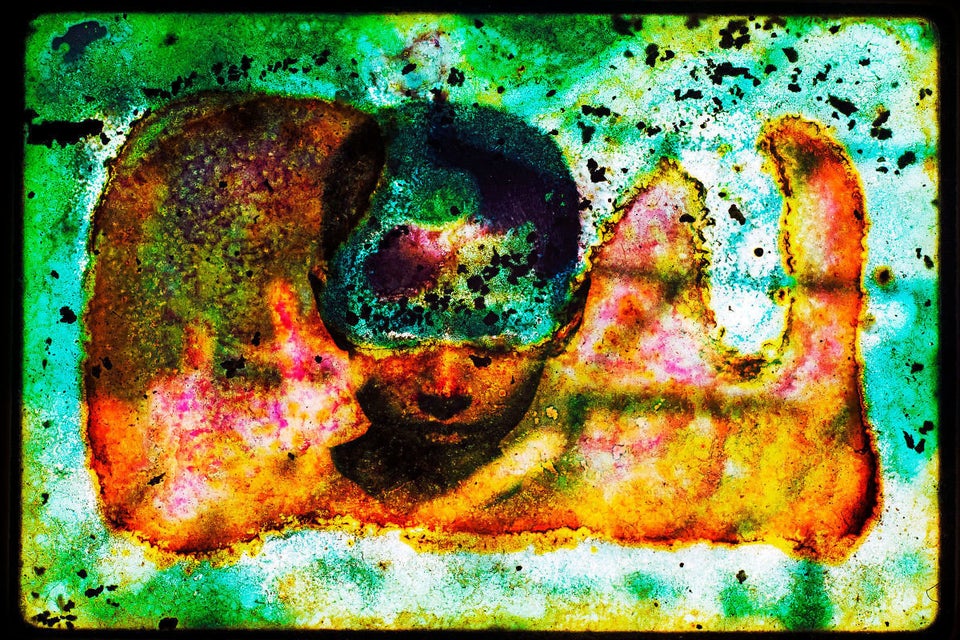
Sumitro Basak, one of contemporary India's most gifted artists, passed away yesterday after he allegedly jumped off his sixth-floor apartment in Sonarpur in the 24 Parganas district of West Bengal.
Basak, who was in his early 40s and best known for his powerful paintings and illustrations, didn't leave behind a note, though he was reportedly suffering from depression. His discontent with the world was palpable in his latest work, which had turned "grey, black, sickly", as Pratiti Basu Sarkar of the Kolkata-based CIMA gallery described it, in sharp contrast to his characteristic use of bold and robust colours.
Born in 1975 in Kolkata, Basak was trained in painting at Kala Bhavana, Santiniketan, the seat of the Bengal School of Art, heralded by the illustrious Tagores — Rabindranath, Abanindranath and Gaganendranath — in the late 19th century. While his early paintings and drawings were beautiful for their draughtsmanship and vibrant colours, it was only in the last ten years that he seemed to have moved towards a signature style.
My first encounter with Basak's art was in 2007-08, when he was painting with acrylic on oversized canvases with stunningly psychedelic colours. I distinctly remember a physical sensation of being jolted by his art on walking into his solo show, On the Verge, at CIMA gallery in 2008.
Some of the canvases covered nearly all of a wall. Multi-panelled paintings presented a panorama of life. Humanoid figures resembling paper cut-outs, but in reality painted with acrylic, exhibited themselves in oddly-distorted postures. You could see through their translucent surfaces, though unlike TS Eliot's "Hollow Men" their headpieces weren't filled with straw — rather with blood, bones, sinews and muscles.
The texture of Basak's paintings would remind many of Andy Warhol's Pop Art — he did borrow elements of the latter's style — but his spiritual inheritance was from Gaganendranath Tagore's wry sarcastic eye. His copiousness was also reminiscent of the medieval Dutch painters, Pieter Brueghel and Hieronymus Bosch. For his ability to look past the surface into deeper ironic truths, Basak was par excellence. In that sense, his art was the most profound expression of his personal politics as well as autobiography.
In 2007, a 30-year-old computer programmer called Rizwanur Rahman was allegedly murdered for eloping with the daughter of a powerful Hindu industrialist and marrying her. While the killing caused an upheaval in West Bengal for months, Basak processed the events in his painting through a visually arresting idiom.
He created an entire universe on canvas, where the word 'Fux' (which he coined), was ubiquitous. It was a not-so-sly reference to the brand of innerwear (Lux Cosy) Rahman's prosperous in-laws manufactured and sold across West Bengal, especially in the rural areas. But beyond the obvious social reference, the term also denoted a sigh of disgust, as though it was spat out in a moment of despair.
For the next few years, Basak travelled to the suburbs and the villages, observing the rituals and practices of daily life, documenting stories of violence and injustice in photographs, videos and drawings. Much of the material he gathered found its way into another body of work, Fuxnama, which firmly established his reputation as a narrative painter.
Basak had a unique talent to seduce the viewer first with the contours of his paintings — the bright colours, contorted shapes — before letting them into their inner mysteries. You could consume his paintings without getting too close to the politics — for the sheer pleasure and delight that hid their sinister depths.
The human and the divine coexisted in his work, alongside the ridiculous and the sublime. From Goddess Kali holding a girl child in a rustic setting to a couple entangled in a bizarre posture of love-making, his art could take you from cosmic expanses to the claustrophobic interiority of middle-class life, especially in Bengal, the toxic patriarchal control over it. His references were eclectic — bawdy popular pamphlets, high literature, music, lyric poetry, he embraced the bustle of life around him with a generous curiosity and sense of mischief. Even the grimmest of subjects would be redeemed by Basak's sparkling humour. His restless creative energy found an outlet in constant innovations.
"His art had private jokes, so many memories, and the fragrance of a friendship I cannot explain in words," Basak's friend and fellow artist Amritah Sen told HuffPost India. "Sumitro's work depicted the increasing isolation and separateness of ordinary people from the 'development' purportedly being done for them," added Basu Sarkar, who worked closely with him.
Basak's hunger for originality was prodigious. He experimented with forms, moved away from the canvas to paper to accordion-fold book-like objects to painting on floors, in the traditional style of alpona popular in Hindu households in West Bengal. He absorbed as eagerly from the pata-chitra painters of Bengal as from the European masters of modernism. For a mind that was so alert, an imagination that was so prolific, an end such as this feels all the more painful, and unacceptable, to his many admirers, friends and well-wishers.
Also on HuffPost
